Pride & prejudice
at high altitude
Tensions between sherpas and foreign climbers in the Himalaya began over 200 years ago, a new study reveals
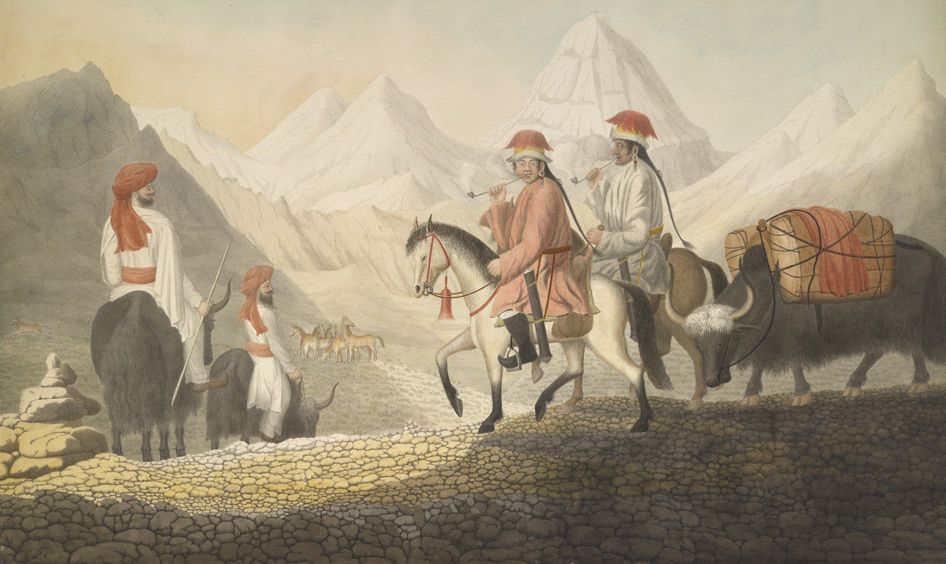
In the 1800s, British imperialists struggled with a mysterious foe in the Himalaya: Altitude Sickness. And, as historian Lachlan Fleetwood has discovered, its debilitating effects heightened tensions between these travellers and their Himalayan helpers.

Today, the causes, symptoms and treatment of altitude sickness are common knowledge.
The condition results from exposure to low amounts of oxygen at high elevation, typically at altitudes of 3,000 metres or more above sea level. Symptoms can include headaches, vomiting, tiredness, difficulty sleeping, and dizziness.
But in the early nineteenth century, this invisible force was poorly understood.
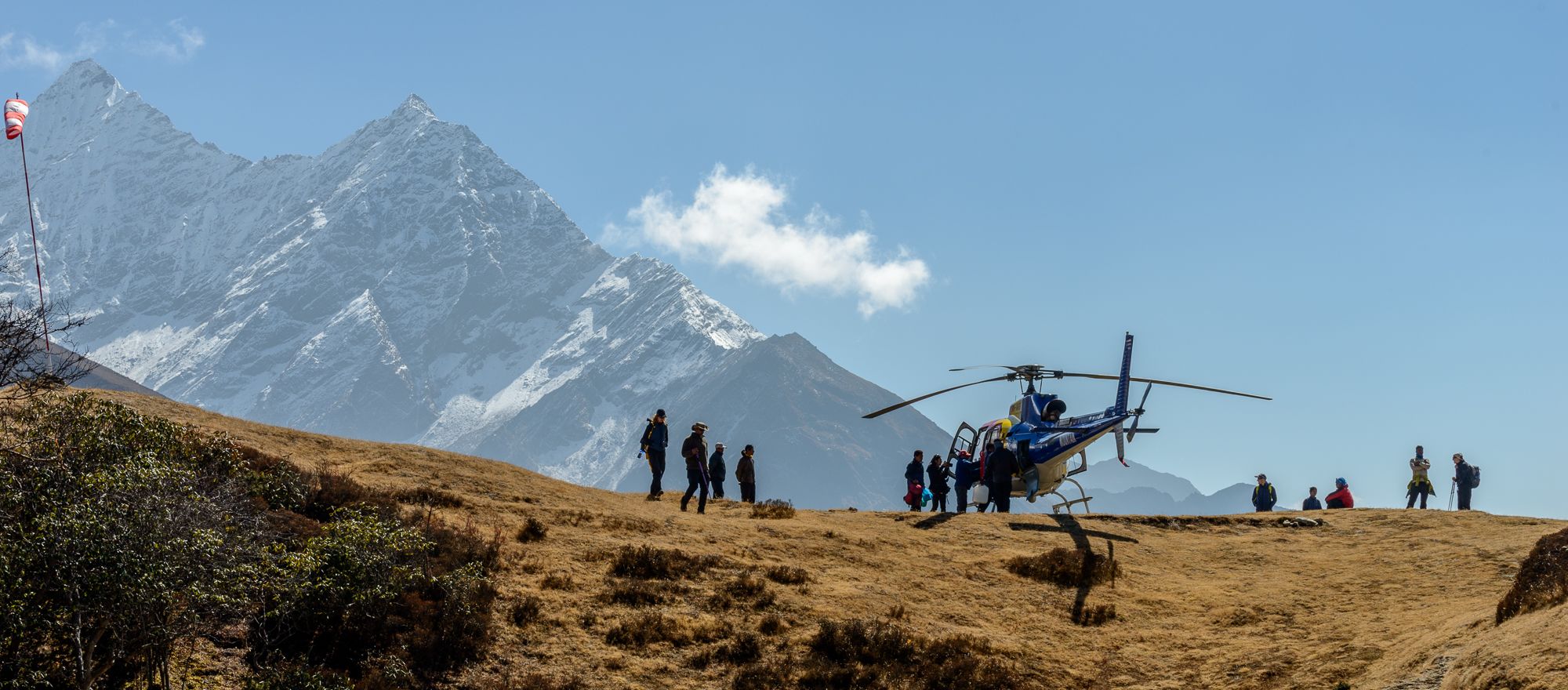
Responsible modern climbers appreciate the need to train and acclimatise to reduce their vulnerability. But recent Cambridge-led research has shown that Sherpas, an ethnic group from the mountain regions of Nepal, have evolved to become superhuman mountain climbers, extremely efficient at producing the energy to power their bodies even when oxygen is scarce. In 2019, one Sherpa even managed to scale Everest twice in a single week and set a new record of 24 total summits.
Meanwhile, however, there has been increasing tension between Sherpas and foreign climbers. Many of its causes are new but Cambridge historian Lachlan Fleetwood has found evidence of closely related pride and prejudice going back to the early 1800s. In an article published in Itinerario, he shows that altitude sickness undermined British imperial expectations that white bodies would outperform those of their new Himalayan subjects.
Having studied dozens of rare journals, letters and reports written by British surveyors, explorers and travellers, Fleetwood shows how this fuelled distrust between British travellers and Himalayan peoples in some of their first encounters with an expansionist British India. He also reveals that both Europeans and locals exploited uncertainty about altitude sickness for personal gain.
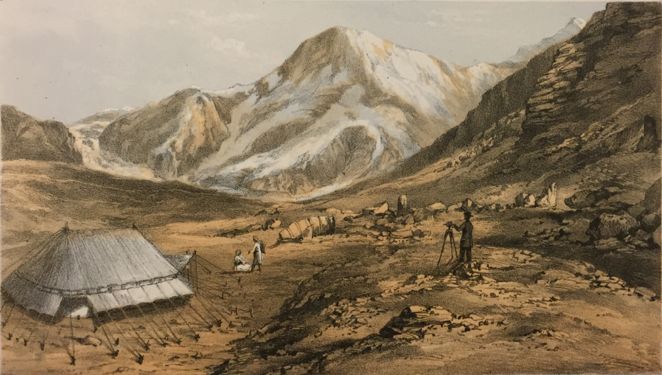
Glacier of the Pindar, 12,000 Feet. From Richard Strachey, “The Physical Geography of the Himalaya,” 1854 (unpublished). British Library, Western Drawings. © The British Library Board
Glacier of the Pindar, 12,000 Feet. From Richard Strachey, “The Physical Geography of the Himalaya,” 1854 (unpublished). British Library, Western Drawings. © The British Library Board
Much of Fleetwood’s evidence comes from East India Company employees, especially Bengal infantryman seconded to surveys in the mountains. “Initially the British thought the Himalaya offered a secure natural barrier,” he says, “but once they realised how many passes there were, the mountains became a troubling source of imperial insecurity.”
British surveyors and administrators tried to fit the Himalaya into a neat imperial framework and a global scientific order. Their encounters with local people shaped relations in the region for decades to come.
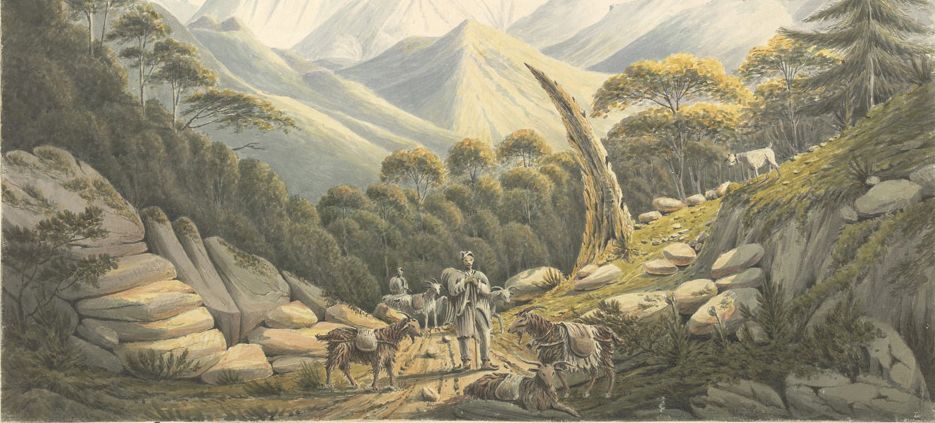
In the late eighteenth century, travelling to very high altitudes was something largely new for European travellers and, then as today, their progress in the Himalaya relied on extensive pre-existing routes and the employment of local people (especially Bhotiya, Tartar, Wakhi, and Lepcha) to show them the correct paths, carry their supplies and take on significant risk. This forced British travellers to compare their physical performance with that of the indigenous population.
Fleetwood, a historian of science and empire, explains: “The British struggled with two competing aims – they wanted to describe their physical trials to secure heroic status and authority at home. But in doing so, they didn’t want to upset racial hierarchies by suggesting that white bodies suffered more than Asian ones.”
This tension is palpable in the writing of the Bengal infantryman Alexander Gerard. In the 1820s, he described how he and his brother James overtook their Himalayan porters and “had infinite trouble in getting them to go on”. But, he then admitted: “we could not have walked much faster ourselves, for we felt a fulness in the head, and experienced a general debility.”
Even more telling, while ascending towards the frontier with Tibet, Alexander wrote:
“we were so completely exhausted at first, that we rested every hundred yards; & had we not been ashamed before so many people, some of whom we got to accompany us after much entreaty, we should certainly have turned back.”
This striking admission of shame appears in an unpublished report to the East India Company and in a published version of the same incident, a remarkable additional sentence was inserted:
“we observed the thermometer every minute almost, in order to show the people we were doing something.”
Fleetwood says of this: “It’s fascinating to picture these brothers pretending to do Western science to mask their physical shortcomings. This is a far cry from the popular image of heroic Victorian explorers.”
Such attempts to conceal vulnerability to altitude sickness were common and often embarrassingly unconvincing. After reaching the Bamsaru Pass, the Scottish artist James Baillie Fraser remarked:
“It was ludicrous to see those who had laughed at others yielding, some to lassitude, and others to sickness, yet endeavouring to conceal it from the rest. I believe I held out longer than any one; yet after passing this gorge every few paces of ascent seemed an insuperable labour, and even in passing along the most level places my knees trembled under me.”
Measuring pulses and rates of breathing added a new dimension to the politics of comparison, as European travellers tried to make sense of wildly differing symptoms. While in the Pamirs, the naval officer and surveyor John Wood took the pulses of everyone in his party and noted with surprise that his was the slowest.

Table from John Wood's Narrative of a Journey to the Source of the River Oxus (1841)
Table from John Wood's Narrative of a Journey to the Source of the River Oxus (1841)
Fleetwood is sceptical about this data and Wood admitted that his comparisons were not entirely fair, not least because the men had been carrying different loads.
While Fleetwood’s focus is on the behaviour of Europeans, he suggests that guides and porters may have attempted to exploit the uncertainty around altitude and the idea of poisonous plants to resist unpleasant and perilous labour.
Himalayan people often told European travellers that their suffering was caused by Bis-ki-huwa, or simply the Bis, which was translated as ‘Wind of Poison’. Most European observers dismissed the idea mainly because plants rarely appeared where altitude sickness was felt.
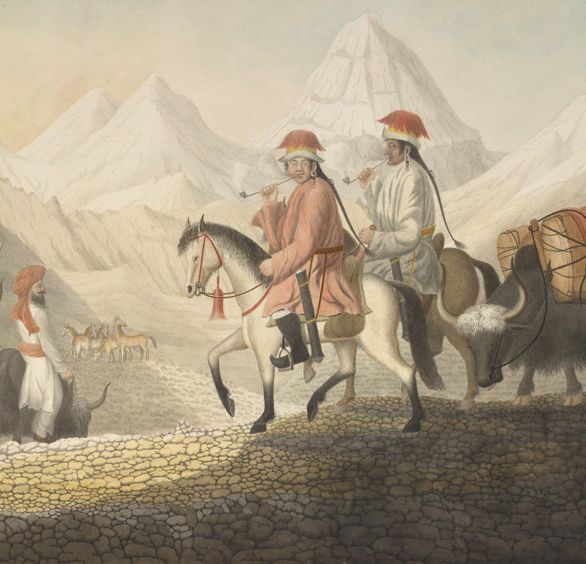
Moorcroft and Hearsay on the road to Lake Mansarowar (Tibet). c.July 1812. © The British Library Board
Moorcroft and Hearsay on the road to Lake Mansarowar (Tibet). c.July 1812. © The British Library Board
![Himalaya section of the “Umrisse der Pflanzengeographie [Outline of Plant Geography]” from Dr. Heinrich Berghaus’ Physikalischer Atlas (1838). Image: David Rumsey Map Collection, www.davidrumsey.com](https://www.cam.ac.uk/sites/www.cam.ac.uk/files/shorthand/210432/khGXTLRyHm/assets/u4hH1DBSPm/himalaya_images-copyright-c-2000-by-cartography-associates-768x828.jpeg)
Himalaya section of the “Umrisse der Pflanzengeographie [Outline of Plant Geography]” from Dr. Heinrich Berghaus’ Physikalischer Atlas (1838). Image: David Rumsey Map Collection, www.davidrumsey.com
Himalaya section of the “Umrisse der Pflanzengeographie [Outline of Plant Geography]” from Dr. Heinrich Berghaus’ Physikalischer Atlas (1838). Image: David Rumsey Map Collection, www.davidrumsey.com
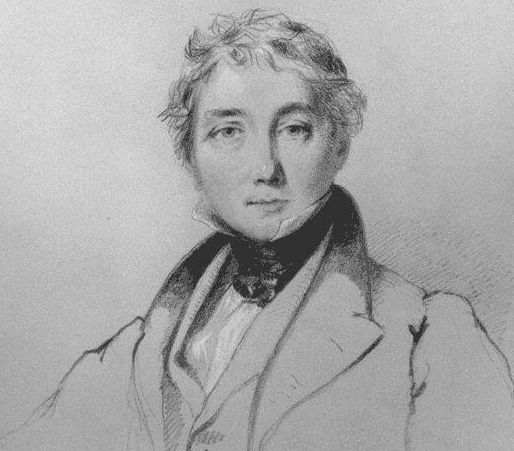
The Scottish artist and traveller, James Baillie Fraser (1783–1856). Portrait by William Brockedon (1833)
The Scottish artist and traveller, James Baillie Fraser (1783–1856). Portrait by William Brockedon (1833)
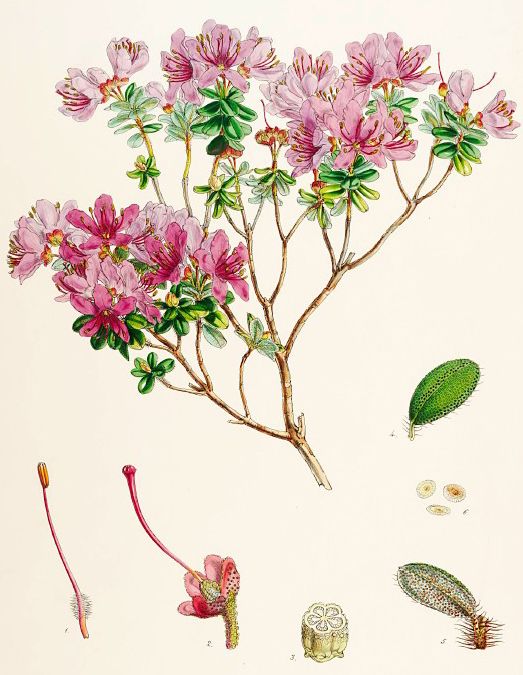
Rhododendron Setosum, one of the plants blamed for 'Bis'. From Joseph Hooker's The Rhododendrons of Sikkim-Himalaya (1849-51)
Rhododendron Setosum, one of the plants blamed for 'Bis'. From Joseph Hooker's The Rhododendrons of Sikkim-Himalaya (1849-51)
Lachlan Fleetwood’s research brings historical context to ongoing disputes over the climbing of Everest.
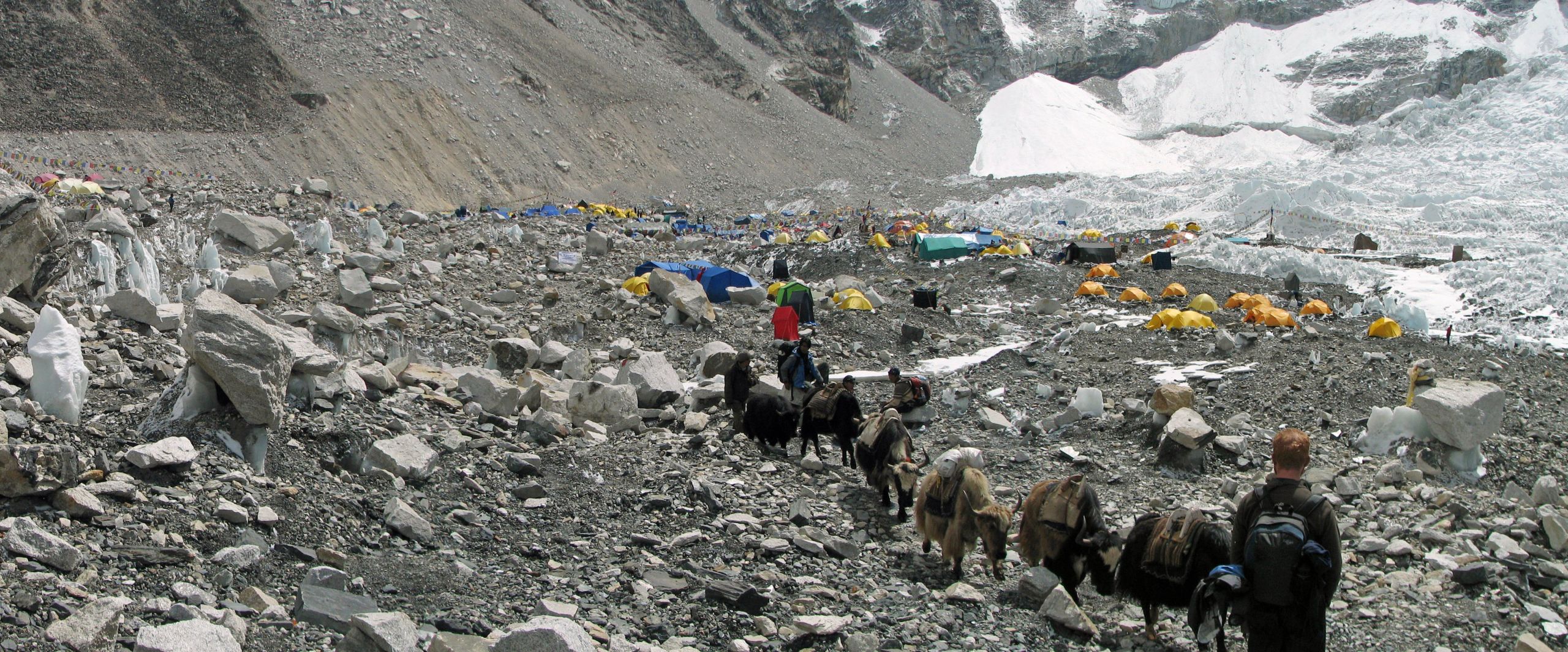
In 2014, Sherpas threatened to strike after an avalanche killed sixteen of their colleagues on the mountain. They gave the Nepalese government twelve demands including for compensation to be paid to the victims’ families. The episode also highlighted growing resentment felt by some Sherpas towards foreign climbers and the foreign companies profiting from Everest.
In part, this stems from concern that some climbers are not fit enough to cope with the mountain’s altitude. More recently, queues of slow-moving inexperienced climbers have been blamed for increasing numbers of fatalities. 2019 witnessed one of Everest’s deadliest seasons as climbers found themselves unable to complete the final 1,000 feet of the climb and descend fast enough to restore their oxygen levels.
“The narrative shifted in the late nineteenth century so that Sherpas came to be valorised as heroic in their own right,” Fleetwood says. “This involved a growing acceptance that their bodies are better adapted to high altitude. But recent events on Everest show that comparisons of physical performance remain a major source of tension.”
Reference: L. Fleetwood, 'Bodies in High Places: Exploration, Altitude Sickness, and the Problem of Bodily Comparison in the Himalaya, 1800–1850', Itinerario (2019)
Cambridge University Press published Lachlan Fleetwood’s Science on the roof of the world: Empire and the remaking of the Himalaya in May 2022
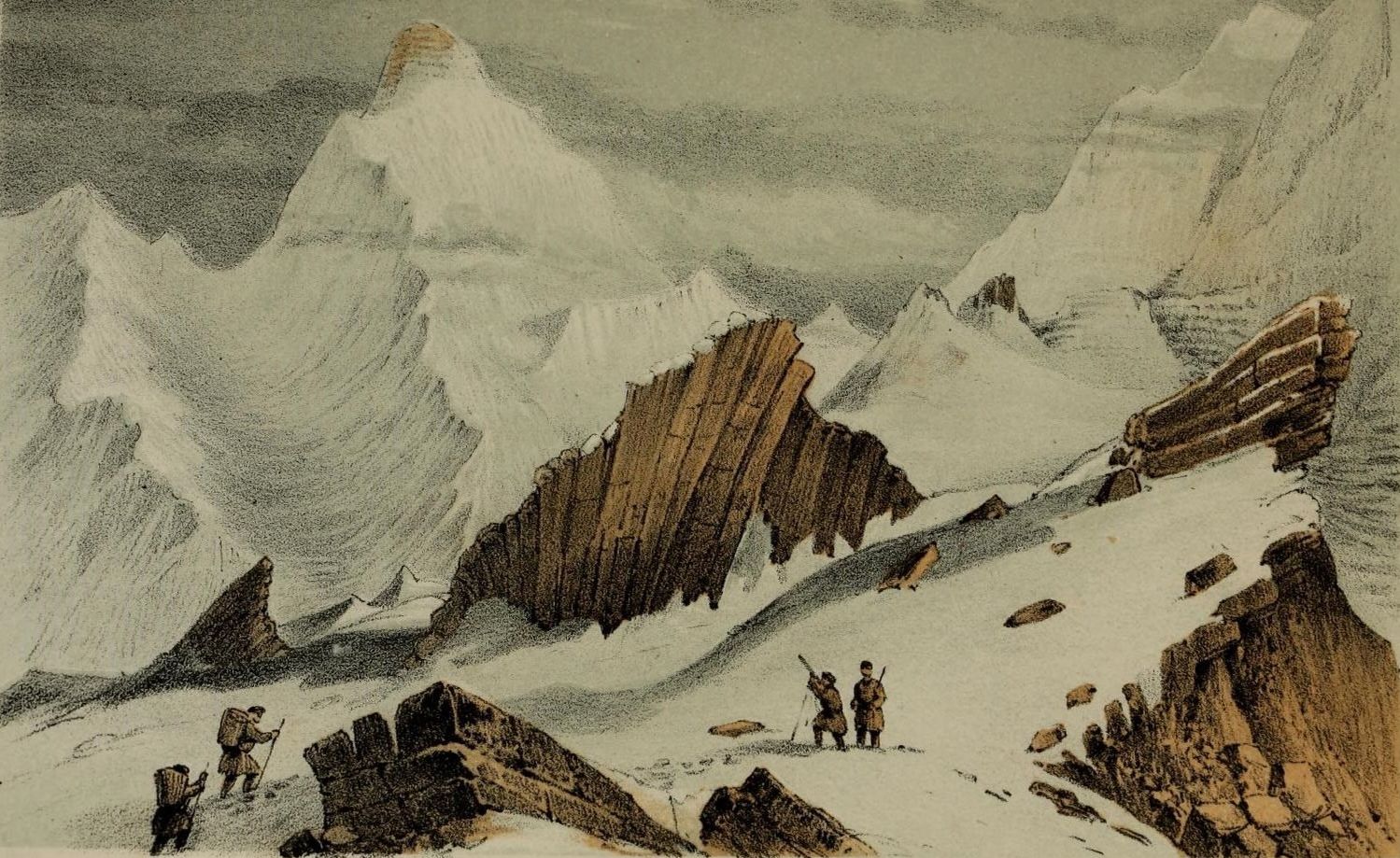
Junnoo 24,000 ft from Choonjerma Pass 16,000 ft, East Nepal, from Joseph Dalton Hooker's Himalayan Journals (1854)
Junnoo 24,000 ft from Choonjerma Pass 16,000 ft, East Nepal, from Joseph Dalton Hooker's Himalayan Journals (1854)

